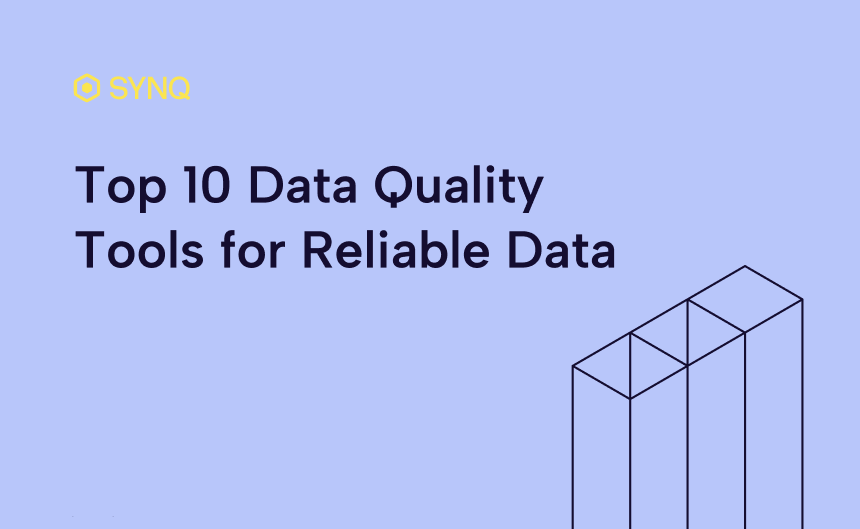The ROI of Data Observability
.png)
Data at the Core of Business-Critical Operations
Analytical data now powers the most critical functions in modern organisations. From fintech firms automating loan approvals to couriers optimising delivery routes to banks completing FCA submissions, data quality directly drives revenue, customer experience, and regulatory compliance.
The rise of AI has pushed the bar even higher. Executives are demanding strategic AI initiatives, and data teams are expected to deliver large volumes of clean, reliable data for training and inference, often at short notice. The ability to detect and resolve data issues in near real time is no longer a “nice to have”, it’s table stakes for competitive, data-driven businesses.
Why Proving ROI Feels Harder Than It Should
Despite the stakes, many teams still struggle to justify investment in Data Observability. Why?
The perception problem – To many business folks, “data quality” sounds like something that’s simply part of the day job. They may not realise that modern data ecosystems are sprawling, with dozens of interconnected systems, thousands of tables, and constantly evolving business logic. Without a deep understanding of this complexity, leaders may question why extra tooling or investment is needed, assuming headcount alone should solve the problem. This makes the initial case for budget an uphill battle, and puts the onus on data leaders to educate the business about this complexity.
Limited business case experience – In many organisations, centralised data teams are still a relatively new function. Unlike software engineering, which has decades of precedent for tooling investments, data leaders haven’t always had the chance to refine formal ROI narratives for their stack. They’re often more comfortable discussing pipelines, schemas, or metrics than framing benefits in terms of cost savings, revenue protection, or risk mitigation. This isn’t a weakness, it reflects the maturity stage of the discipline.
At SYNQ, we saw this with a global e-commerce company whose data team was losing days each month diagnosing and fixing broken pipelines. Their initial budget request focused on technical features, monitoring coverage, anomaly detection models, without quantifying the business cost of downtime or the value of faster recovery. Together, we reframed the case around revenue protection during seasonal peaks and compliance assurance in regulated markets. The result? Budget approved within the quarter and incident resolution times cut by over 60% in six months.
Macroeconomic caution – When budgets tighten, data teams are often scrutinised for cost and headcount. Leaders may fear that asking for additional investment will attract unwanted attention or put them on the radar for cuts. As a result, they try to stay “light” in terms of financial footprint, even if that means living with inefficiencies that ultimately cost more. Ironically, avoiding investment can make it harder to prove the team’s strategic value in the long run.
The Cost of Doing Nothing
Failing to invest in Data Observability has cascading consequences:
- Short term – Hours are burned every week by firefighting: trawling through alerts, manually tracing data lineage, running root cause analyses, and patching pipelines under pressure. On top of that, leaders and engineers spend significant time communicating fixes and fielding escalations from frustrated business users, time that could otherwise be spent on proactive improvements.
- Medium term – Strategic projects stall as reactive work dominates the backlog. Instead of delivering new analytics capabilities, self-serve tools, or AI-driven insights, the team is stuck in a “break–fix–repeat” cycle, missing opportunities to support revenue growth and cost reduction.
- Long term – Trust in the data erodes, and with it, the team’s influence. When stakeholders can’t rely on centralised data, they create shadow systems, duplicate effort, and increase risk. Over time, the data function risks being seen as a service provider of last resort rather than a strategic partner.
Industry data shows that teams without robust observability spend 40–60% of their engineering capacity on reactive data quality work. With effective observability, that drops to 10–20%, freeing up hundreds or thousands of hours each year for innovation and strategic priorities.
The Smarter Path: Automation and AI
Most data incidents follow a cause-and-effect pattern: an upstream change leads to a downstream break. Today’s data environments are rich with metadata across warehouses, transformation layers, BI tools, and orchestration systems, meaning root cause analysis can be largely automated.
AI-driven workflows can detect anomalies, identify likely root causes, and surface them directly to the team, cutting manual investigative effort by 80–90%. With human review still in the loop, the practitioner moves from “detective” to “decision-maker.” Coupling these workflows with contextual data product definitions, embedded testing, and incident management makes the process nearly seamless.
SYNQ’s Scout is a prime example. For clients like Aiven, Scout’s AI-driven root cause analysis has reduced time-to-diagnosis from hours to minutes, enabling data teams to resolve incidents before they impact downstream consumers. By automatically tracing issues across the stack and presenting actionable insights, Scout has freed teams from repetitive investigative work, allowing them to focus on proactive improvements and strategic initiatives rather than constant firefighting.
How to Calculate the ROI of Observability
To win buy-in, quantify ROI from two perspectives: team efficiency and business impact.
Data Team Impact
- Measure the % of time spent on data quality work.
- Formula: Annual Cost of Data Quality Time = Team Size × Average FTE Cost × % Time on Quality Work
- Example: A team of 6 spending 40% of their time on quality at £100K fully loaded cost per person = £240K/year. Cutting that to 15% frees £150K worth of capacity.
Business Impact
Quantify the financial consequences of key failures:
- Broken ad-spend pipelines → $10K/day lost in acquisition revenue.
- Missed delivery scheduling → customer churn, SLA penalties.
- Inability to trace data lineage during audits → regulatory fines and reputational damage.
When you combine reclaimed team capacity with avoided business losses, the numbers often show a 3×–4× return within the first year. Even small wins compound quickly. See the SYNQ ROI Calculator to put these principles into practice.
The Benefits of Data Observability
A successful Data Observability strategy delivers:
- Trust – Reliable, high-quality data builds confidence. More trust leads to more reliance on the data platform, unlocking new use cases and cementing the data team’s role as a critical business partner.
- Efficiency – Less firefighting frees time for strategic work, innovation, and proactive optimisation.
- Cost Savings – Headcount-equivalent gains from reduced manual effort, plus direct revenue protection from fewer downstream failures.
Teams that make this shift often find that their influence grows alongside their technical capability, moving from “support function” to “strategic enabler.”
📦 How To: Build Your ROI Case in Five Steps
- Measure the % of your team’s time spent on data quality.
- Calculate the cost of that time using the formula above.
- Identify and quantify downstream business losses from data failures.
- Model savings from efficiency gains and incident avoidance.
- Present a combined, quantified case tied directly to business outcomes.
By pairing hard metrics with a vision for AI-assisted automation, you can build an ROI case that’s impossible to ignore, and position your data team as a strategic asset rather than a cost centre.



.png)
.png)